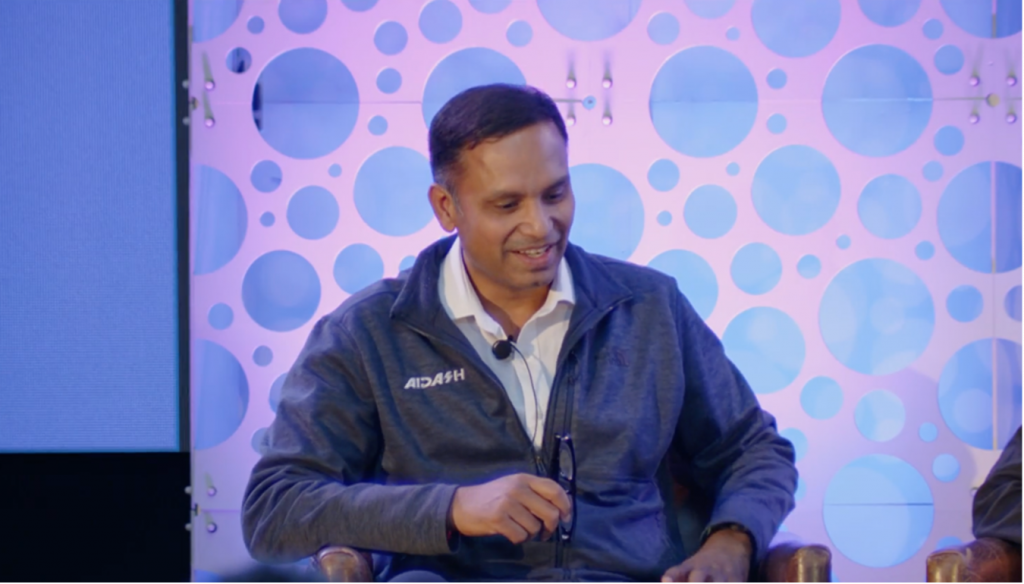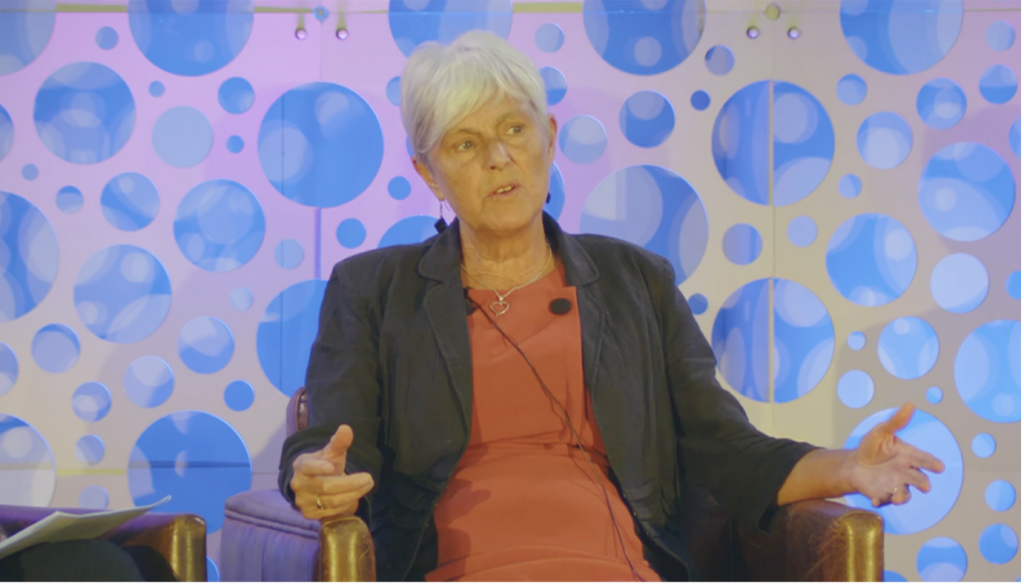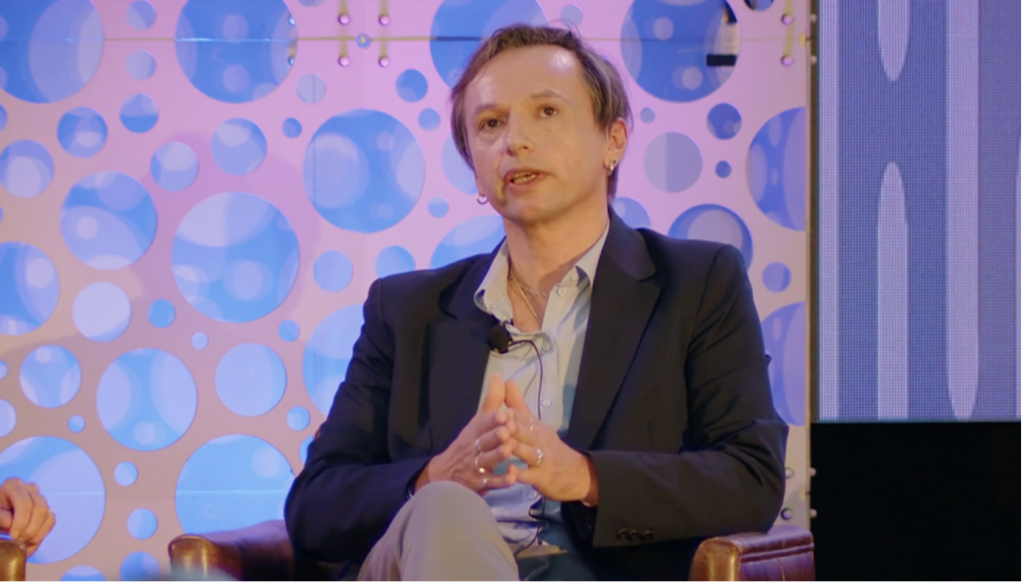
This is a recap of a session from AiDASH Evolve 2024
Summary
- By integrating biodiversity into your utility planning, you create opportunities to turn risks into rewards and strengthen your bottom line.
- Thanks to the UK’s approach to measuring biodiversity — which many countries are embracing — there’s no need for utilities to start from square one to start planning and benchmark biodiversity.
- Building the case for biodiversity takes time and cooperation, but you can avoid pitfalls.
Championing biodiversity is good for business as well as the planet. But how do U.S. utilities bring biodiversity into the picture?
AiDASH Evolve 2024 brought together leaders of 2 UK-based organizations to share their insights — Nick White, Principal Advisor, BNG, Natural England and Sally Hayns, CEO, Chartered Institute of Ecology and Environmental Management (CIEEM).
Together, they focused on the UK’s biodiversity net gain (BNG) regulations, their work toward creating a sustainable natural environment, and how their experiences can help U.S. utilities take steps toward enhancing biodiversity in and around their operations.
AiDASH Vice President of EMEA Shashin Mishra moderated the discussion about how the UK and other areas around the globe are safeguarding our food chain and environmental health.
Biodiversity and business: Turn risks into rewards
Hayns and White agreed that biodiversity and habitat conditioning can align with business goals by boosting resilience, cutting costs, and improving public perception. They emphasized that nature and infrastructure aren’t inherently at odds. Instead, thoughtful management of estates — like prioritizing open habitats — can enhance biodiversity while reducing risks like power outages caused by tree falls.
White said that there’s real opportunity in how estates manage and maintain utility lines, “both to provide fantastic opportunities for nature … but also managing areas in a way that reduces that risk.” This approach strengthens networks, benefits wildlife, and positions nature as a valuable asset class.
Hayns highlighted the urgency of addressing both climate and biodiversity crises. With increasing regulations, businesses are expected to reverse biodiversity loss. She explained how biodiversity supports ecosystem services that many businesses depend on, making investment in nature not just compliance-driven but also operationally crucial.
She added, “If we keep degrading those ecosystem services, then we’re going to damage the resilience of those business operations. So, it’s in a business’s interest to try and find ways of investing in reversing biodiversity loss and enhancing biodiversity.”

Hayns also shared success stories, like South West Water’s shift to nature-based solutions by partnering with farmers. This approach — which included changing fertilizer, pesticide, and soil erosion prevention practices — reduced costs, enhanced biodiversity, and built community trust. Similarly, Scottish and Southern Electricity Networks turned vegetation management into a biodiversity win, creating pollinator-friendly grasslands and restoring seagrass beds.
These strategies reduced risks, improved reputations, and smoothed regulatory processes, showing biodiversity can drive operational and reputational benefits.
Boost biodiversity to strengthen the grid — and bottom line
Mishra next asked the panel to consider whether improving land biodiversity directly enhances grid resilience and reliability. Both Hayns and White agreed that it does.
Hayns emphasized that landowners can adopt practices benefiting both biodiversity and business operations. These efforts reduce costs, improve biodiversity, and strengthen brand reputation. She highlighted how becoming a “nature-positive” company also attracts talent and retains employees, while offering a competitive edge with eco-conscious customers.
“People want to work for companies with good reputations and feel they’re part of doing that good. And similarly, customers increasingly want to think that they are buying from good companies,” she explained.
White expanded on this, noting that biodiversity management reduces risks like flooding and storm damage. He stressed collaboration with neighboring landowners to manage landscapes holistically. For example, better flood management by adjacent landowners can prevent infrastructure damage during extreme weather.
Both speakers cited opportunities to use biodiversity to support local ecosystems and economies. White highlighted how promoting pollinator-friendly vegetation under power lines, in lieu of trees that can create fall-in-risks, not only protects the grid but supports farmers by enhancing crop pollination. “There’s an opportunity to boost…the resilience of neighbors as well as the actual…infrastructure itself,” he said.
Both advocated for biodiversity investments to create benefits both for infrastructure and the wider community.
UK’s biodiversity model crosses international borders and may help the U.S.
Both Hayns and White agreed that translating biodiversity net gain (BNG) policies to the U.S. will be challenging. But BNG will also offer big opportunities, as evidenced by the UK’s approach.
“Having a robust and objective way of being able to say actually this is how we can do something, that’s positive,” he said. “There’s a huge amount of interest internationally in what’s happening in England at the moment,” he added, noting that utilities can apply insights from UK successes to U.S. operations.
White emphasized the importance of proving the business case for BNG to reduce risks, especially during planning. He explained that in England, a clear framework for assessing impacts on nature [via the Defra Statutory Biodiversity Metric tool] has helped to “de-risk projects,” cut delays, and reduce costs for developers. It also eases regulatory hurdles.
Hayns echoed this, noting that U.S. planning policies could benefit from adopting a “win-win” approach: Developers who balance biodiversity restoration with business needs are more likely to gain support from planning authorities.
“I think governments or regulators do need to be persuaded,” she said. “My experience is [that] generally they can be a bit risk averse.”
She stressed that England has succeeded in its approach because forward-thinking businesses demonstrated BNG’s viability, which gave policymakers confidence to act.
Close the ecology gap with smarter tools for greater impact
The UK has experienced a shortage of ecologists to address the BNG mandates of the Environment Act 2021, an issue the U.S. may also face as new biodiversity regulations emerge.
Hayns and White agreed that the growing demand for ecologists must be met with smarter strategies and innovative tools. Hayns highlighted a skills and capacity gap, particularly as the focus shifts from mitigation to designing biodiversity-positive solutions. She stressed the need to embrace technology, such as tools for rapid baseline assessments, allowing ecologists to focus on higher-level interpretive work. “There’s too much work and not enough people,” she noted, which makes technology indispensable.
White built on this, emphasizing the challenges of working across diverse and difficult terrains. He explained that advanced technologies, like remote sensing, reduce the need for ecologists to physically access hazardous areas while improving efficiency and safety.

Hayns added that utility companies, which are large landowners, face unique challenges with the huge scale of data collection. She pointed out that up-to-date data is critical for timely decision-making.
“They need to be able to collect that data very efficiently and in a usable time,” she said. “They don’t want that data to be going out of date before it’s [able] to inform this decision-making and planning.”
Both speakers agreed that technology doesn’t replace ecologists but rather amplifies their impact, making the profession more adaptable to increasing biodiversity demands.
Shift from sampling to full habitat mapping and monitoring
The classical approach of sampling and using statistical techniques to extrapolate and identify what’s on the ground offers only a snapshot in time and space, thus limiting certainty.
However, Hayns pointed out that tools like like AiDASH Biodiversity Net Gain Management System™ (BNGAI™) enable repeated, full-site data collection, providing a clearer and more reliable picture. This technology aligns with England’s BNG requirements, which demand that landowners maintain habitat monitoring on their sites for 30 years.
While ground-truthing remains essential, Hayns stressed that tools like BNGAI are vital to assessing BNG efficiently and at scale. “You’ve got a greater degree of certainty because you’ve got the whole picture,” she said. And that picture allows you to assess what you’ve got, identify how much gain you want to deliver, and try and restore or create habitats accordingly, she added.
White also highlighted the advancements in satellite technology, now capable of 30-centimeter resolution. He explained how integrating these tools with habitat-based metrics enables informed decisions with high certainty.
“Yes, you do need to do ground truthing,” he conceded, “but it opens up the real opportunities to then kind of utilize technologies in a really exciting way that has never previously been possible.”
Both speakers championed combining technology with ground-truthing to achieve robust and scalable outcomes.
Metrics turn nature into numbers and offer insights to drive action
Balancing nature’s complexity with clear tasks requires practical tools and data. Organizations need metrics to help them simplify biodiversity into actionable insights and present evidence-based plans to stakeholders, from boards to investors, Hayns said. With metrics, “You’ve got data, you’ve got numbers, you’ve got evidence that you can present to you your bosses, to your boards, to your investors, to give them confidence not only in what you’ve got but what your plans are to improve that.”
While some resist reducing nature to numbers, Hayns argued this is essential to slow biodiversity loss. Data-backed decisions provide confidence and accountability for improving natural assets.
White agreed, emphasizing that metrics help prioritize conservation efforts. By assigning value to habitats, businesses can identify critical areas to protect or enhance. He highlighted how this approach supports mitigation hierarchies, avoiding unnecessary impacts and costly offsets.
White also noted that metrics can ease communication, allowing you to “talk to other professionals…around the business about the importance of nature in a language that they can understand.”
Lessons from England: Avoid pitfalls in BNG implementation
Implementing biodiversity net gain principles requires collaboration, consistency, and upskilling across professions. White highlighted the need to engage not just ecologists but also engineers, architects, and legal teams. Upskilling these groups takes time, but their involvement is crucial.
In England, over 300 consenting bodies must align, making consistency vital. The decision to nationally mandate the single Statutory Biodiversity Metric has been a game-changer, simplifying processes. “A multiplicity of metrics doesn’t really help anyone. You need a consistent approach,” said White.
Another important change has been to shift the paradigm on the way developers think about nature. White explained. Historically, nature was an afterthought, often neglected in site designs or maintenance plans. The new approach with BNG flips the script: Developers now ask how nature can enhance their projects. This proactive mindset integrates biodiversity into long-term decision-making, making developments more attractive to live and invest in.
Changing mindsets and systems takes time, so White further advised utilities to invest in ongoing training, adopt a unified metric, and prioritize nature early in projects.
Further, both speakers agreed that digital tools have been critical for analyzing ecosystems at scale. Technology can pinpoint high-impact intervention areas and ensure habitats deliver maximum benefits.
The move from traditional sampling and surveys to satellite-driven solutions like BNGAI has also helped, by easing the daunting task of monitoring habitat improvements for 30 years, per UK government mandates.
The time is now
Utilities in the U.S. don’t need to wait for regulations before they embrace biodiversity. In fact, just improving the quality of habitats under and around transmission lines may not only add value to the surrounding nature but also can improve the resilience of those lines. Utilities start early (that is, now) by involving ecologists, local communities, and other local stakeholders as they work towards creating reliable services and a sustainable future for all.
Check out more sessions and information from Evolve 2024, and reach out to see BNGAI in action!
The best collection of tools, tips, guides, and industry stories – straight to your inbox.
Subscribe to our newsletter
